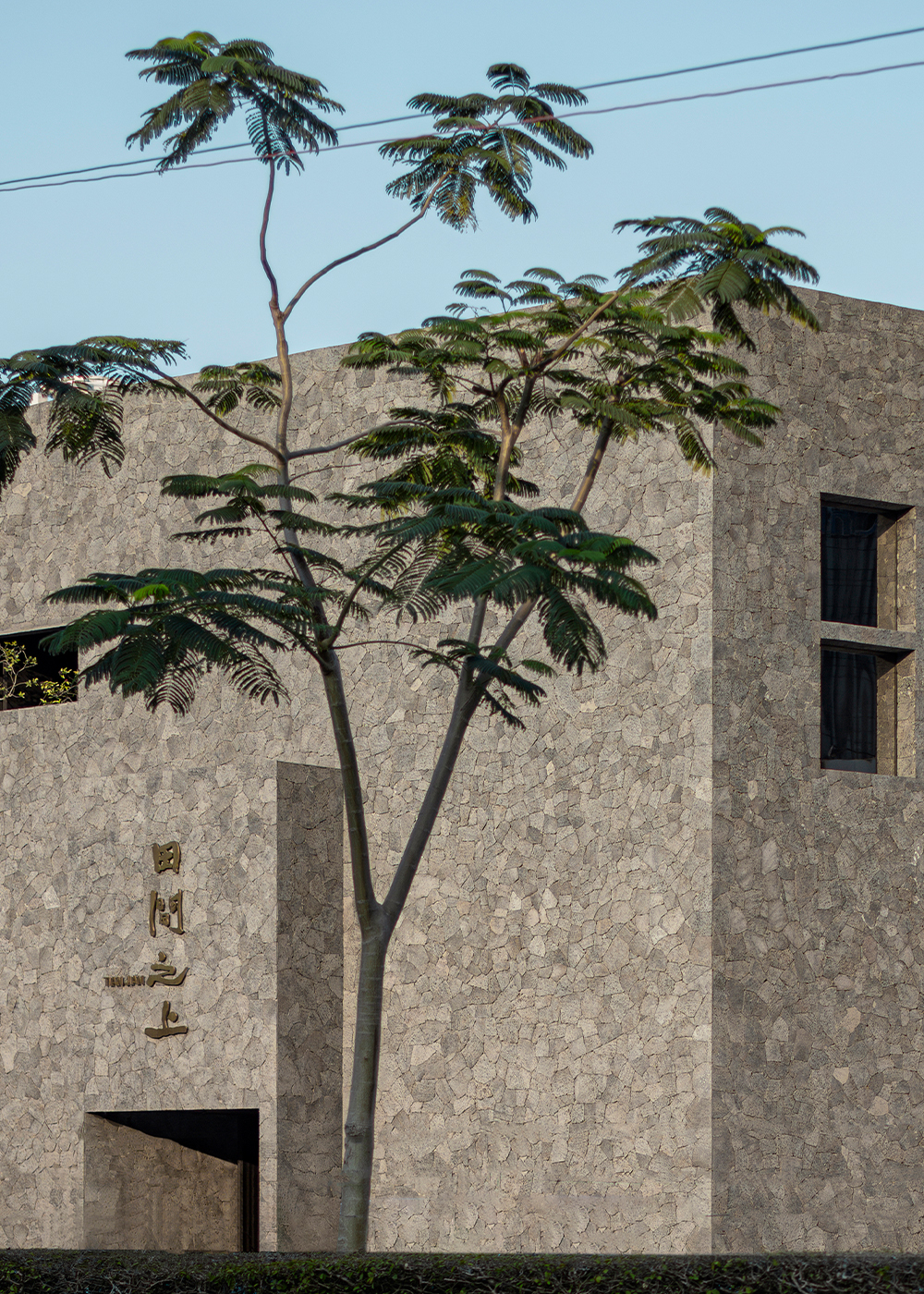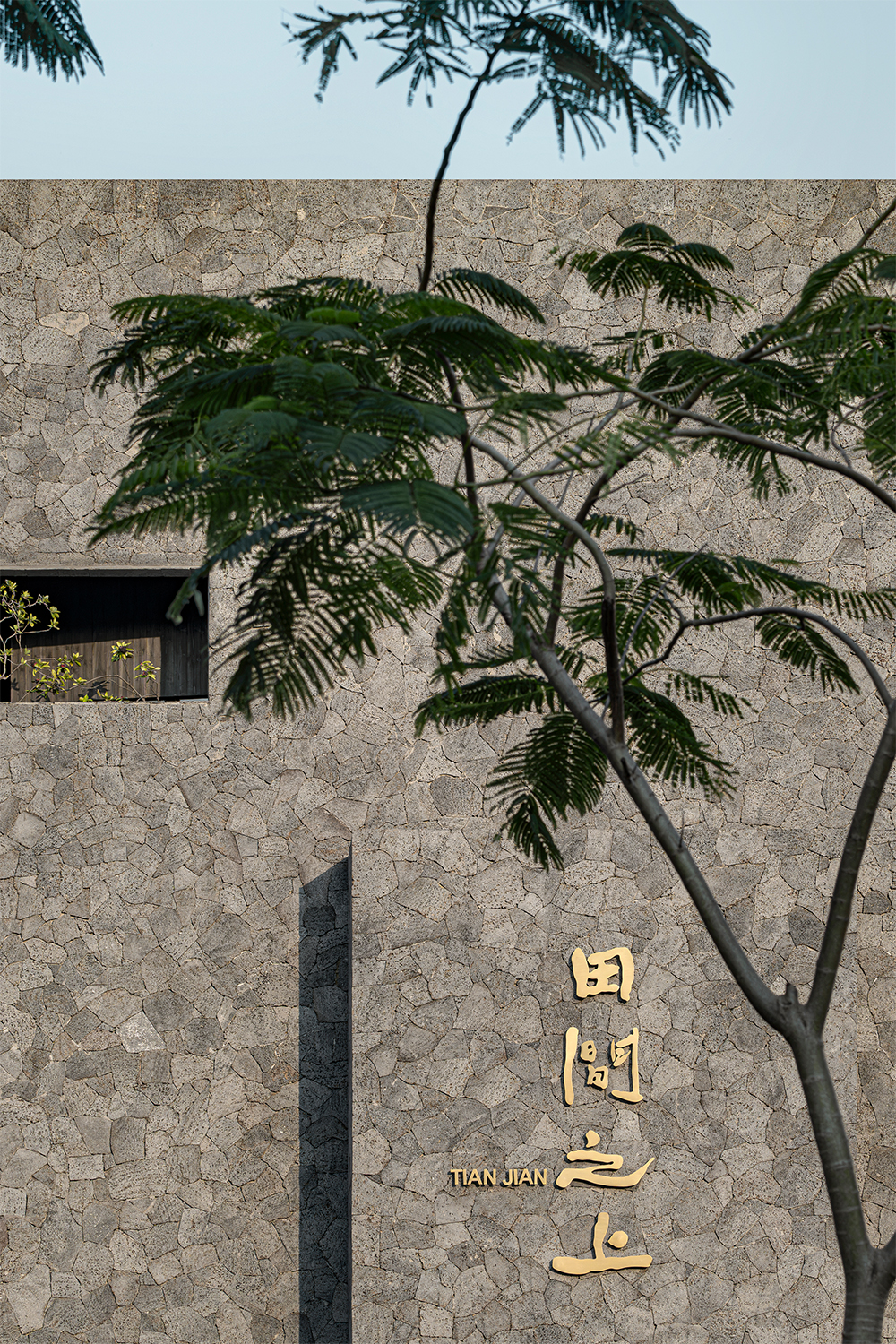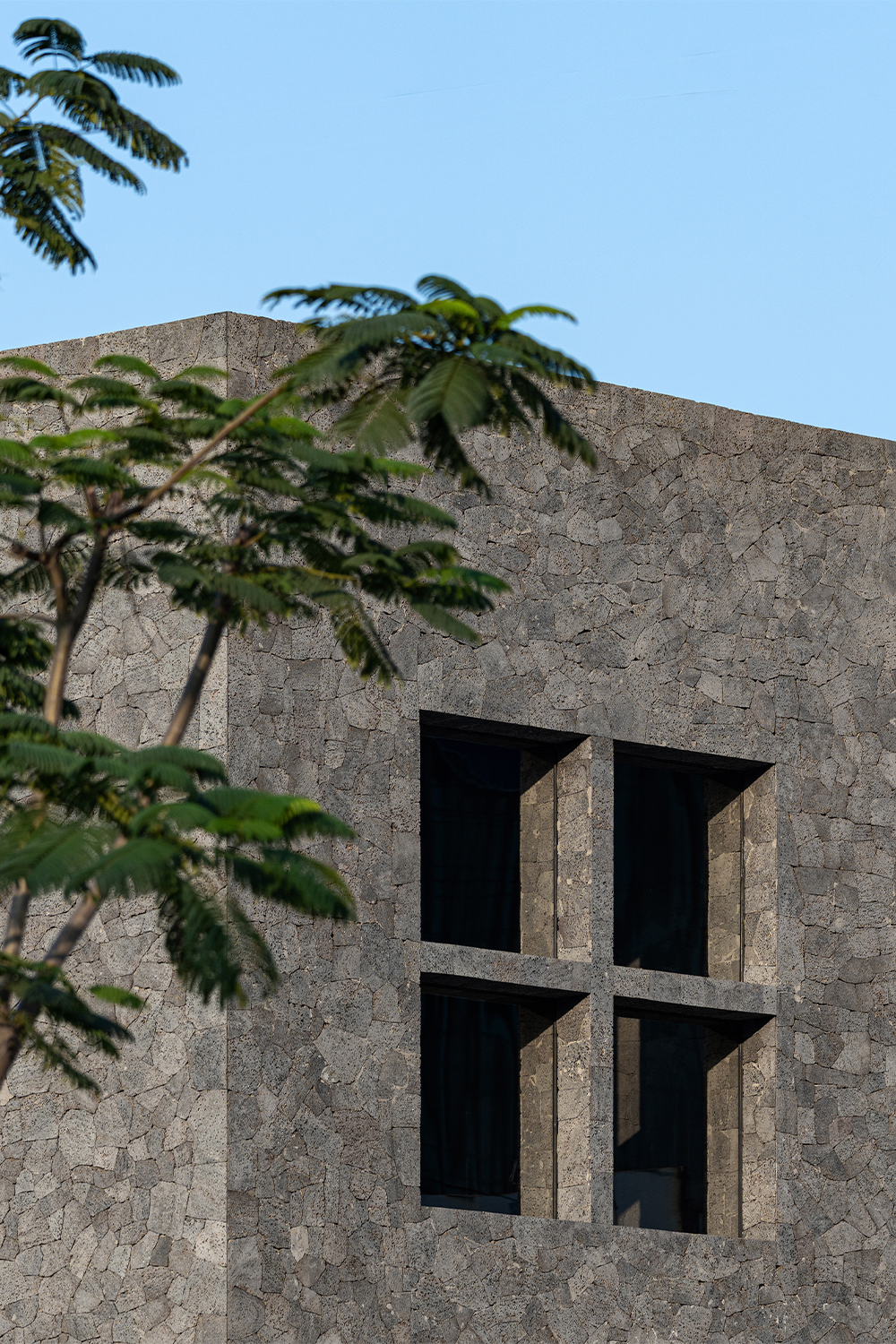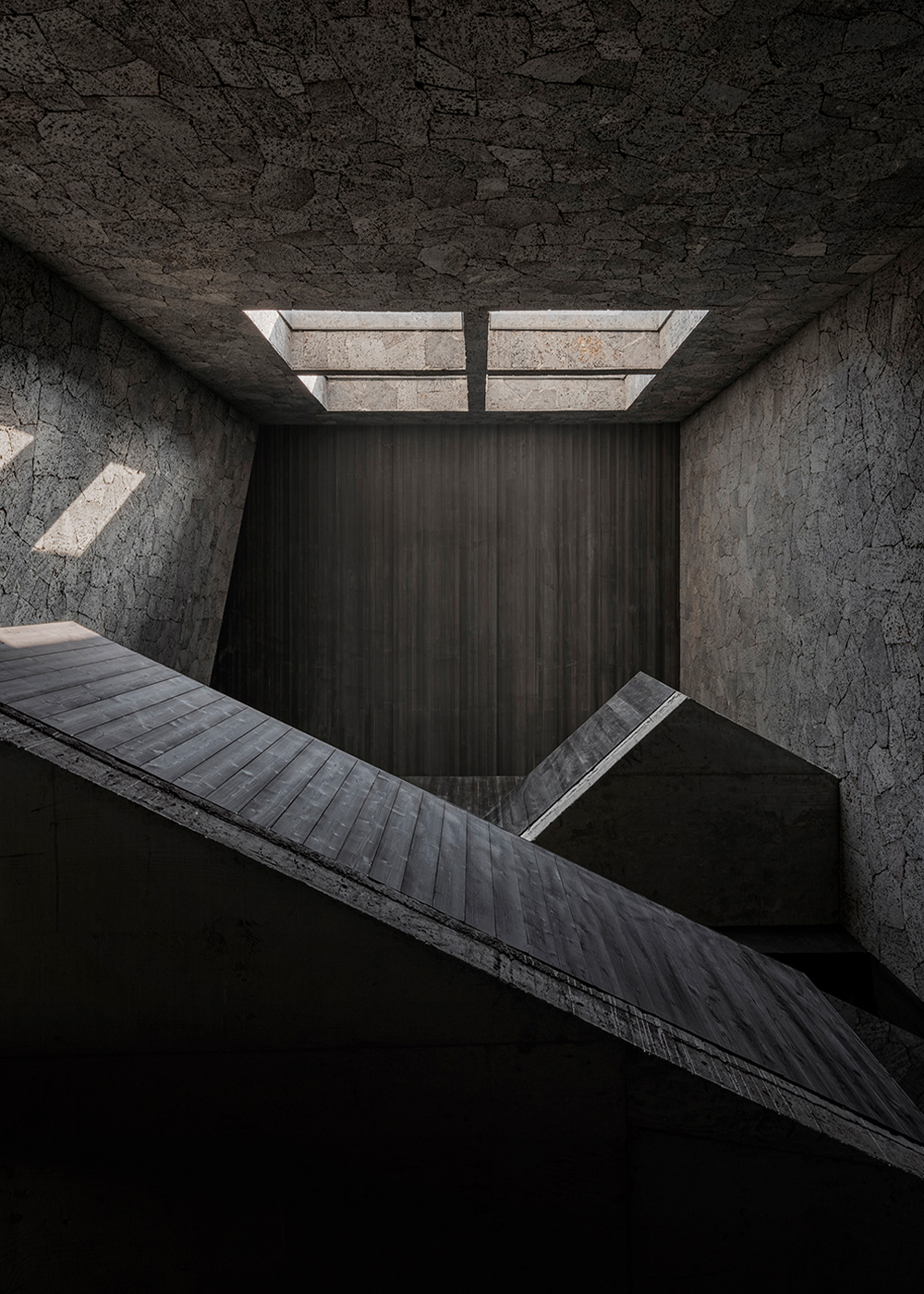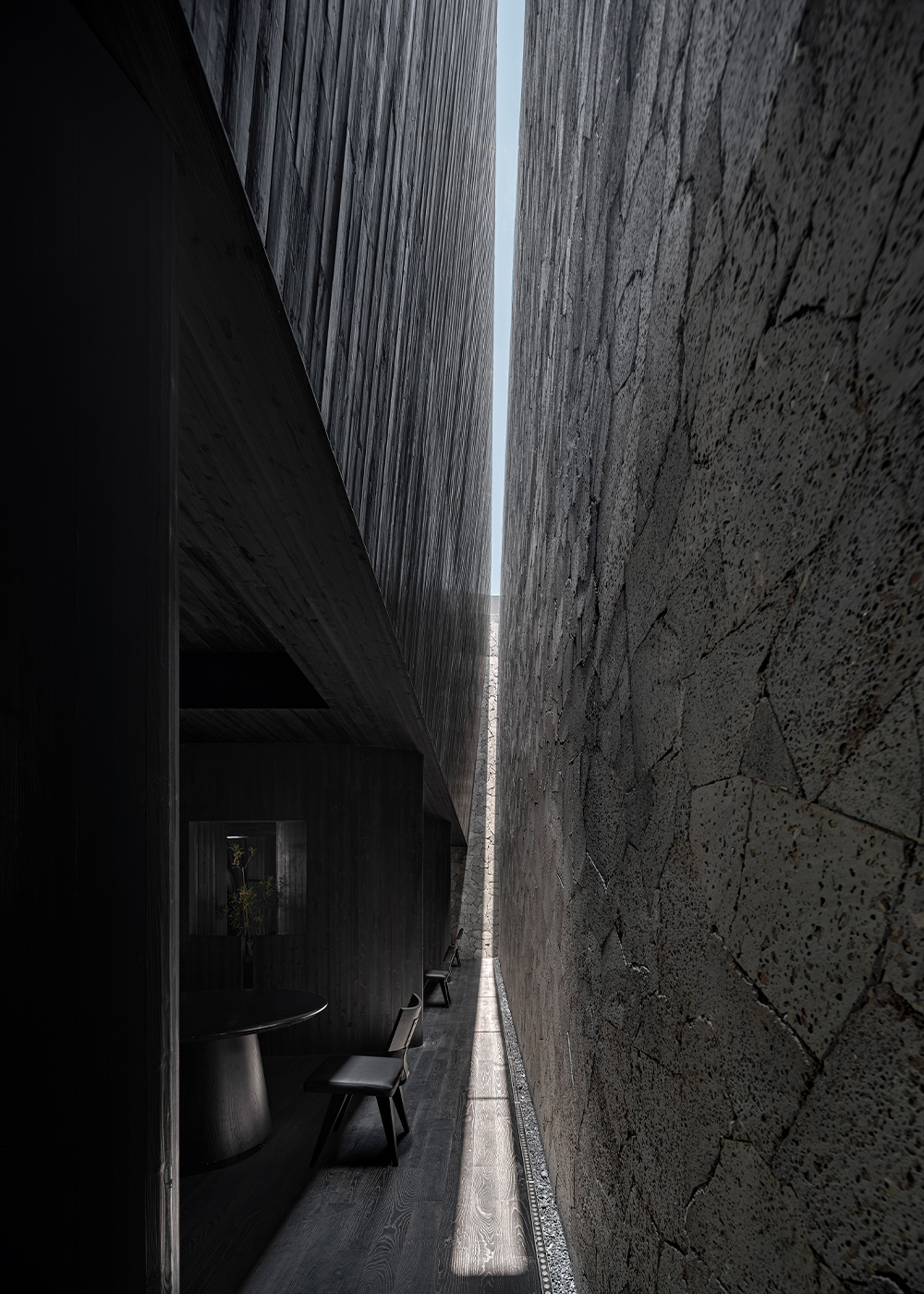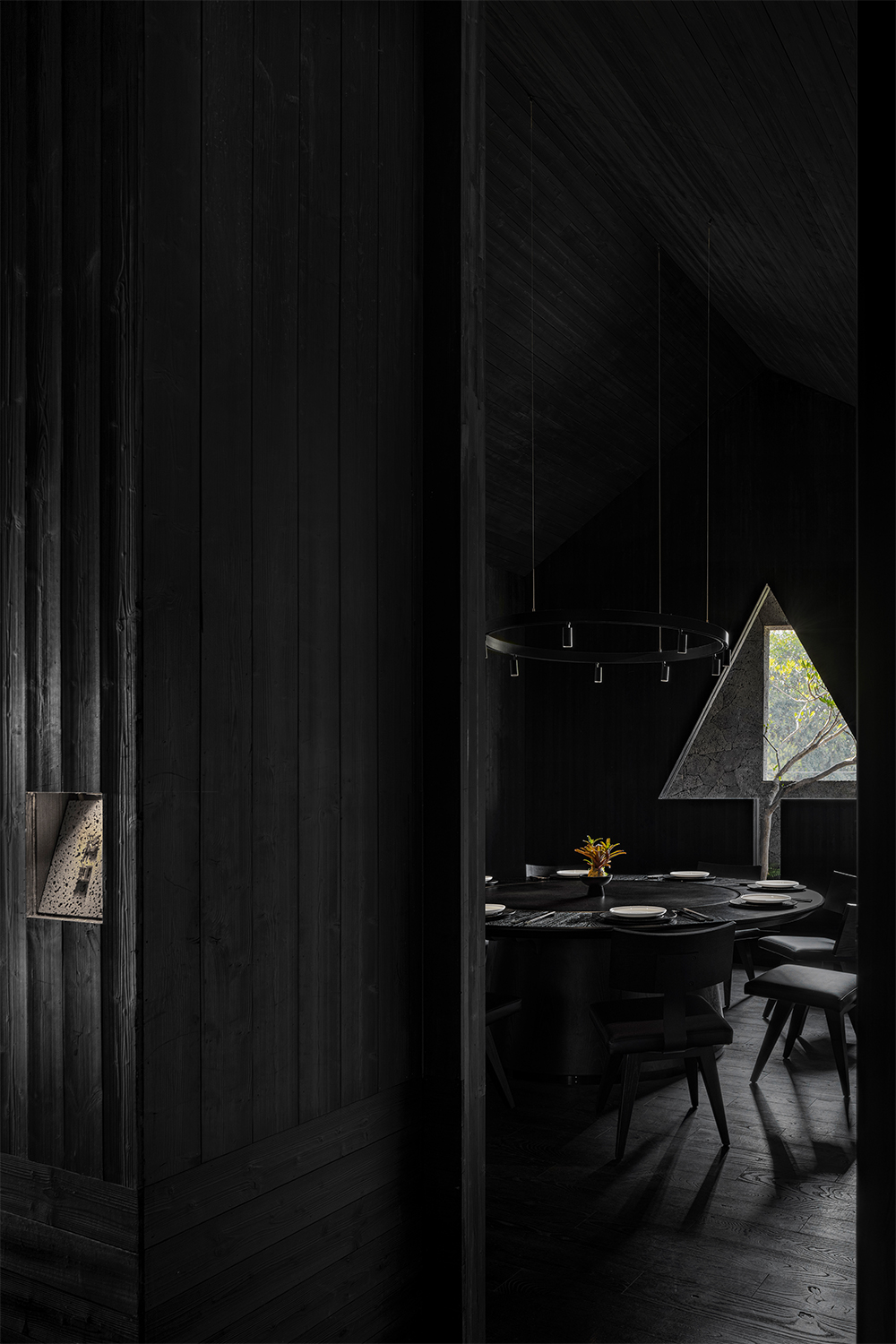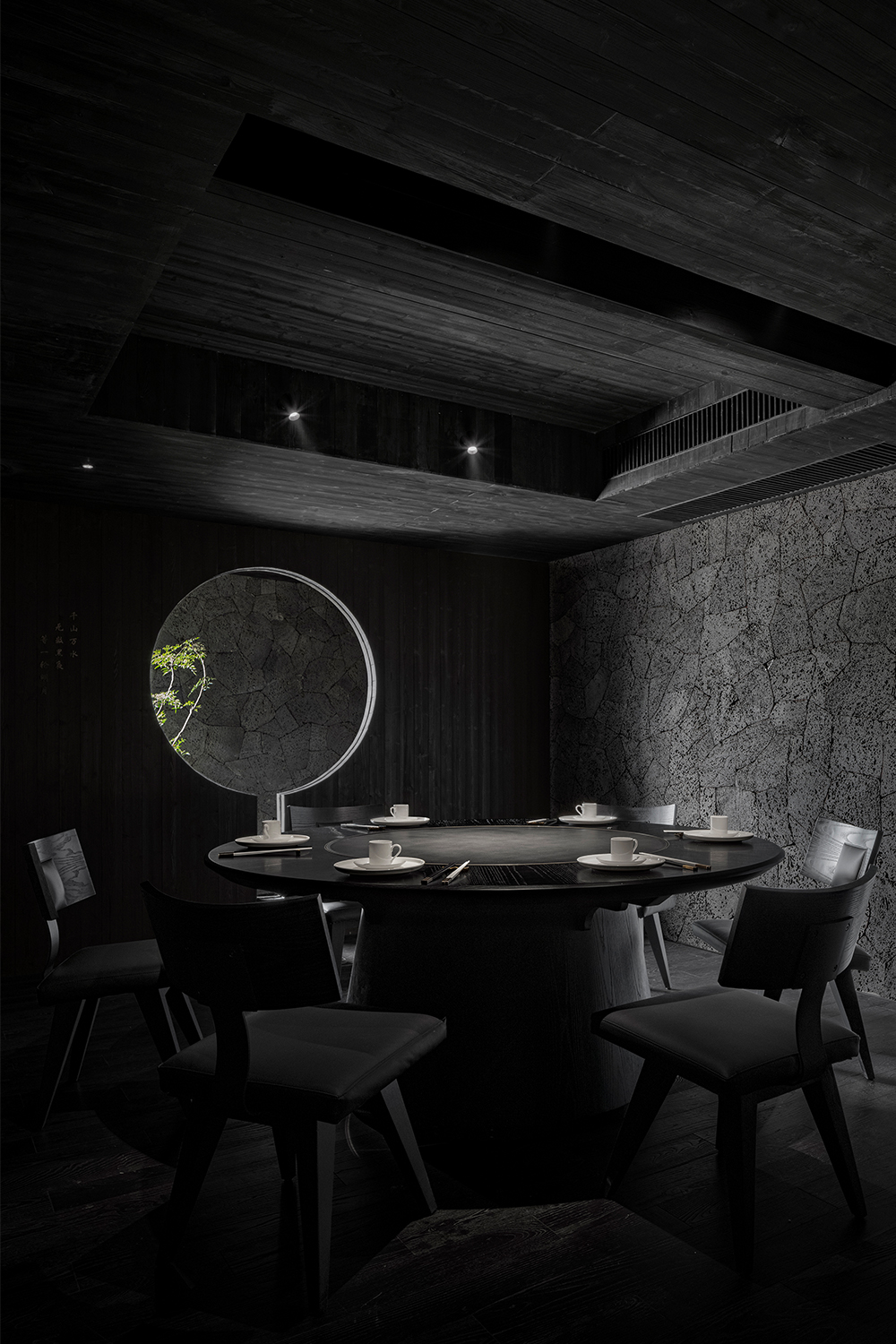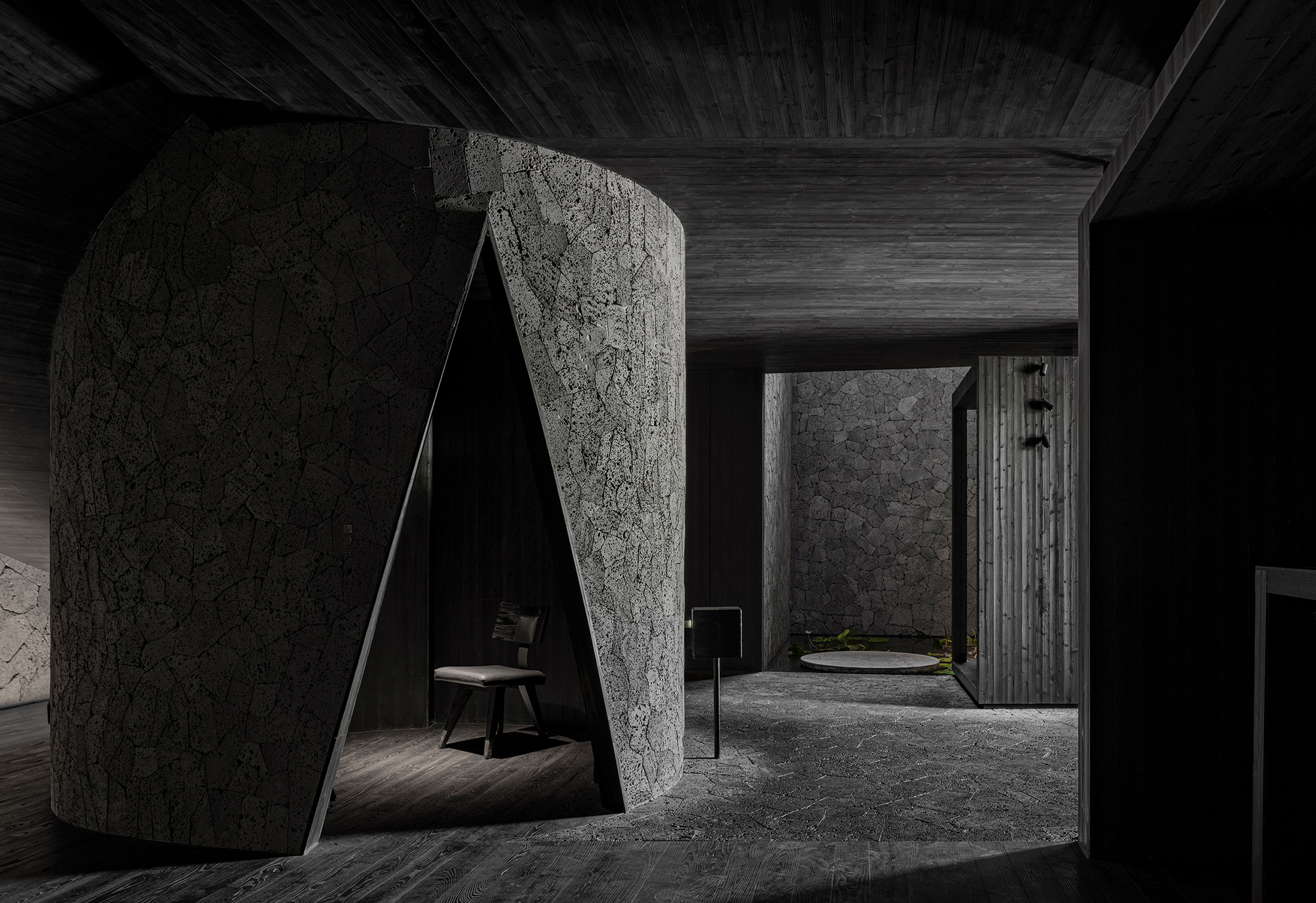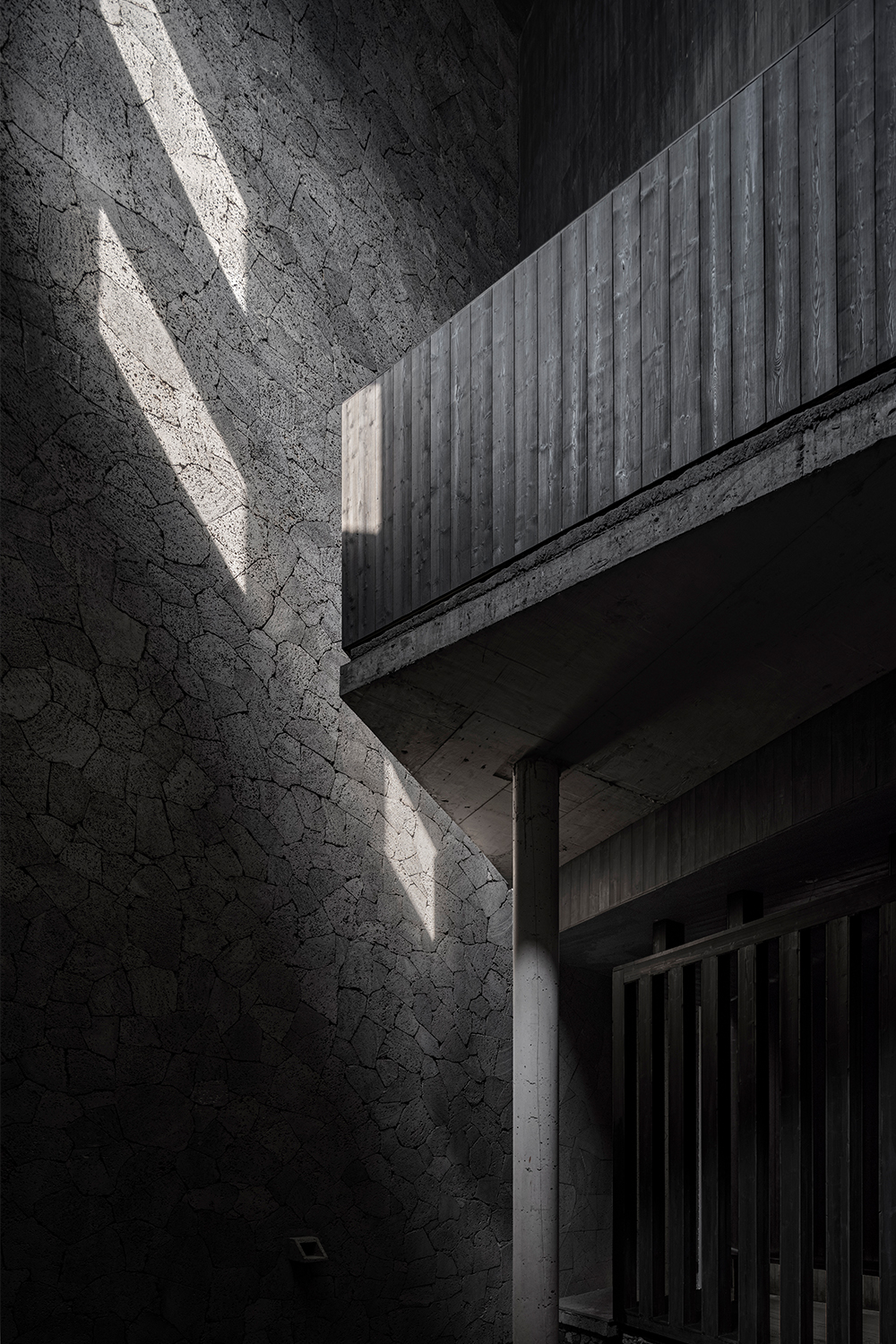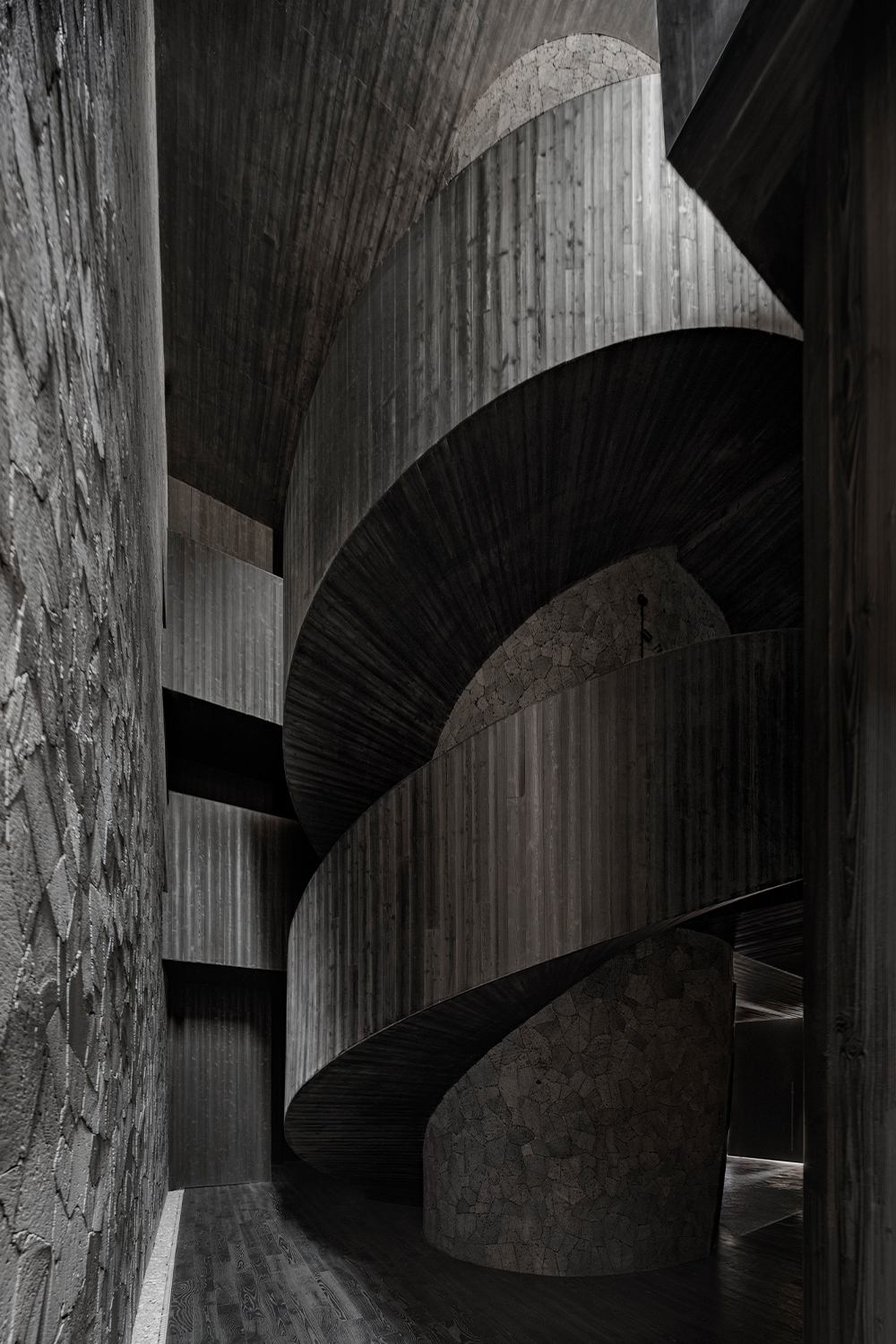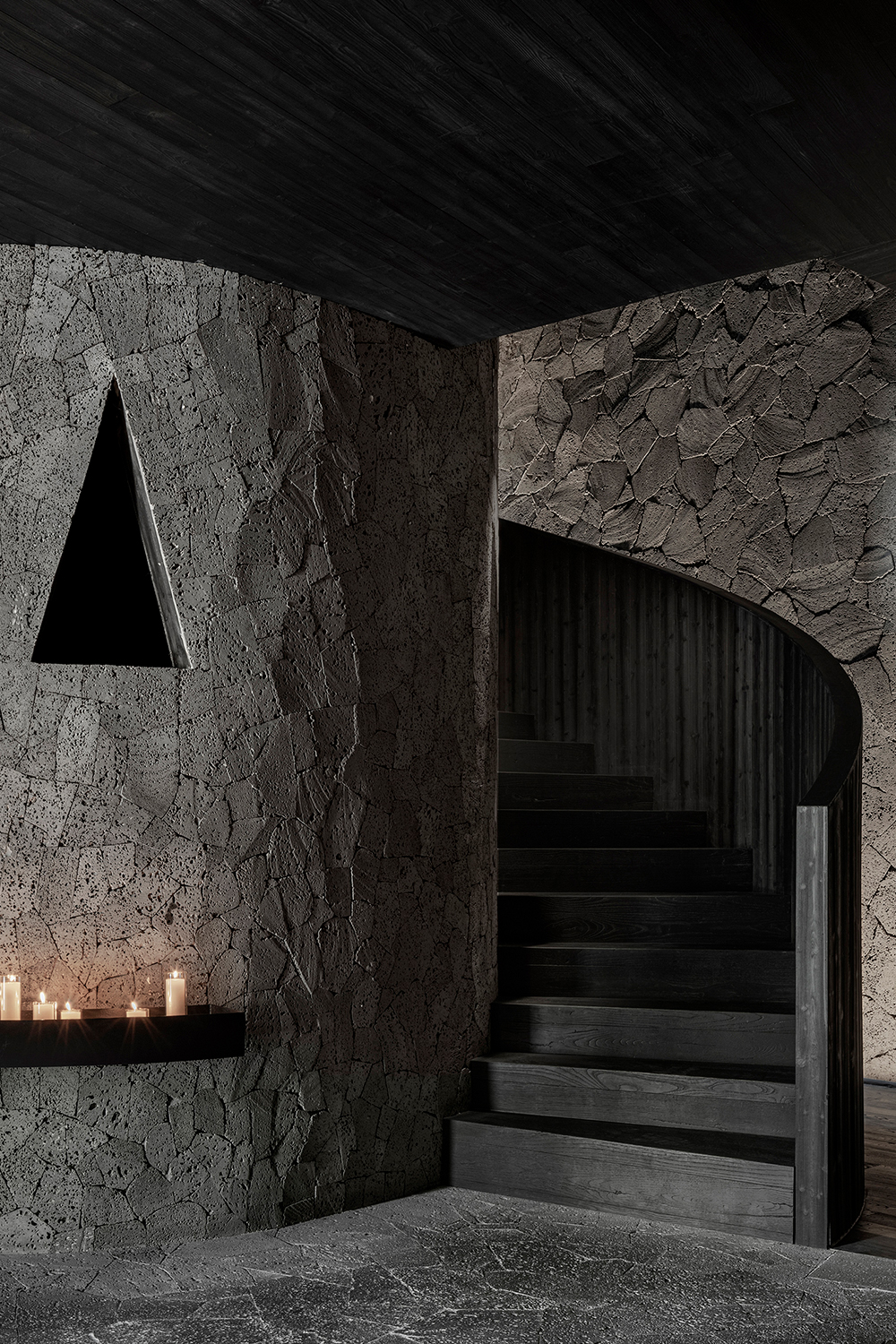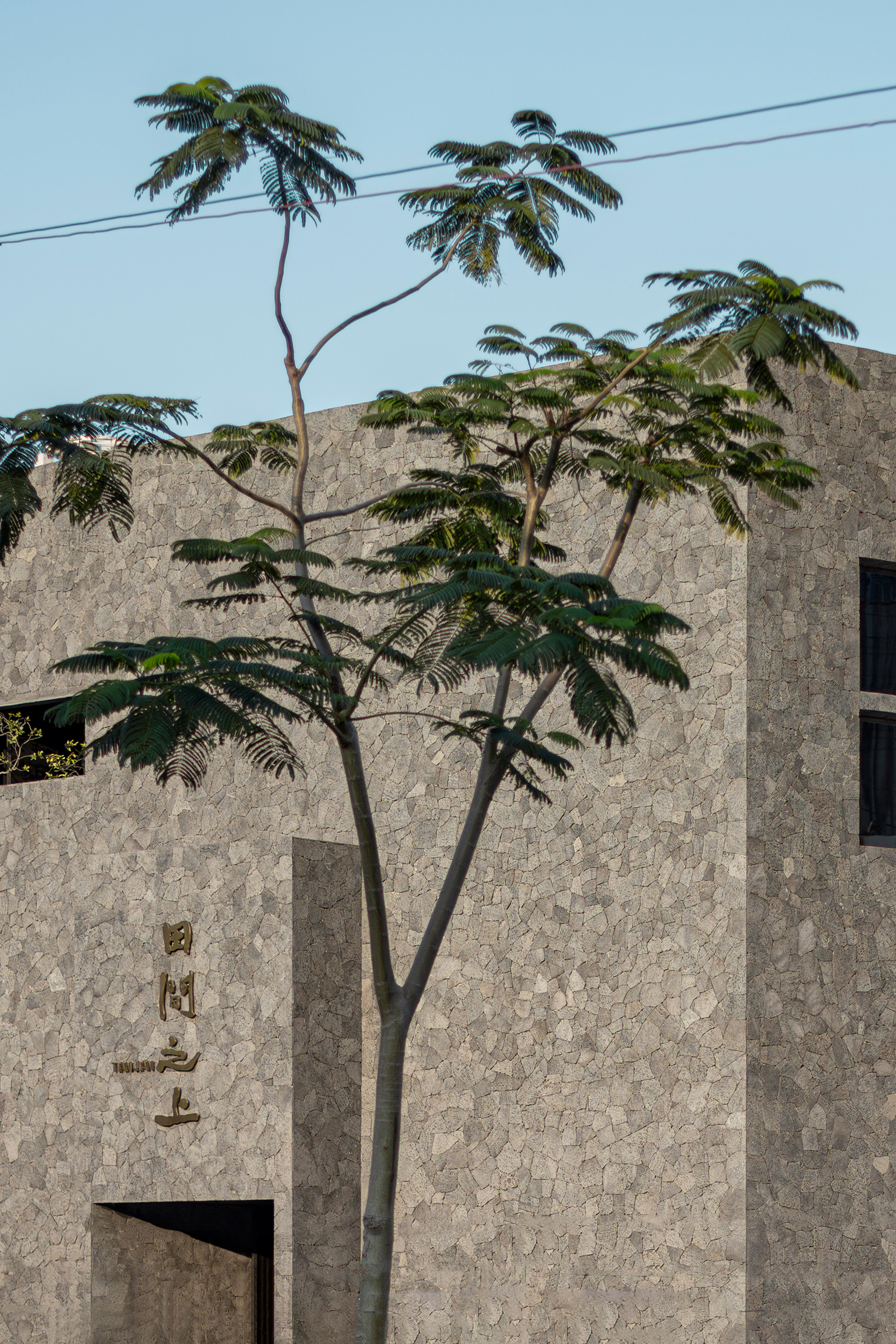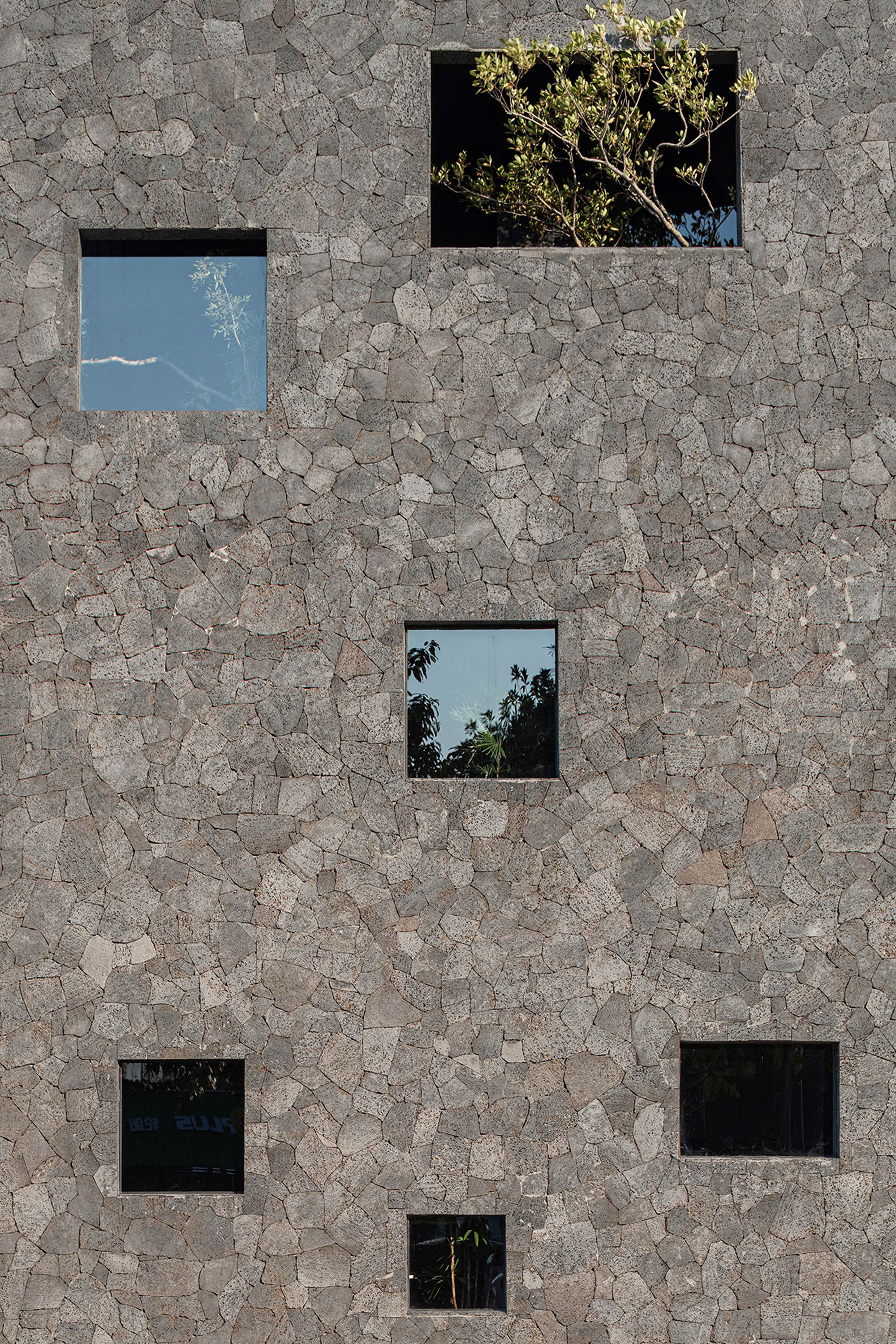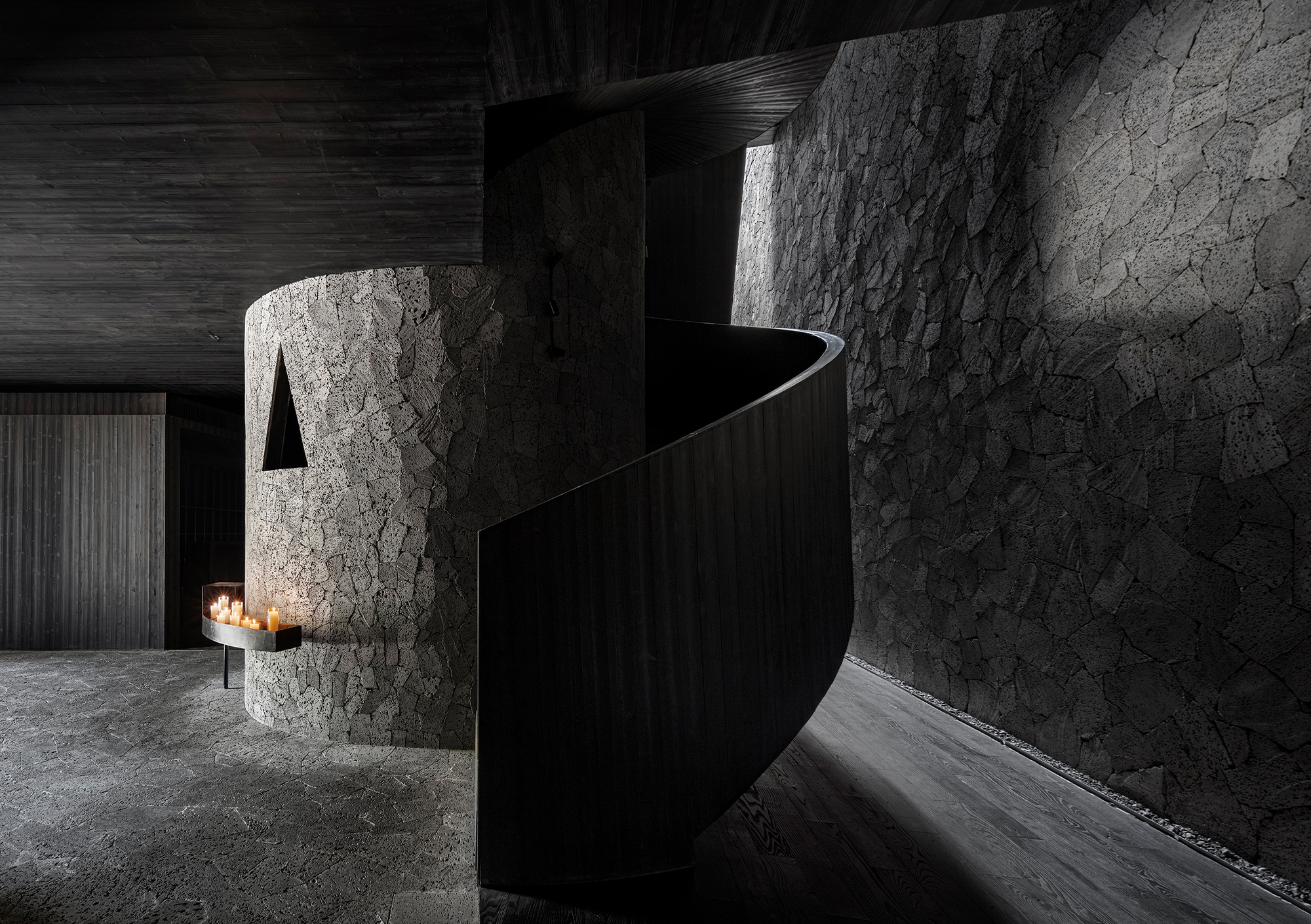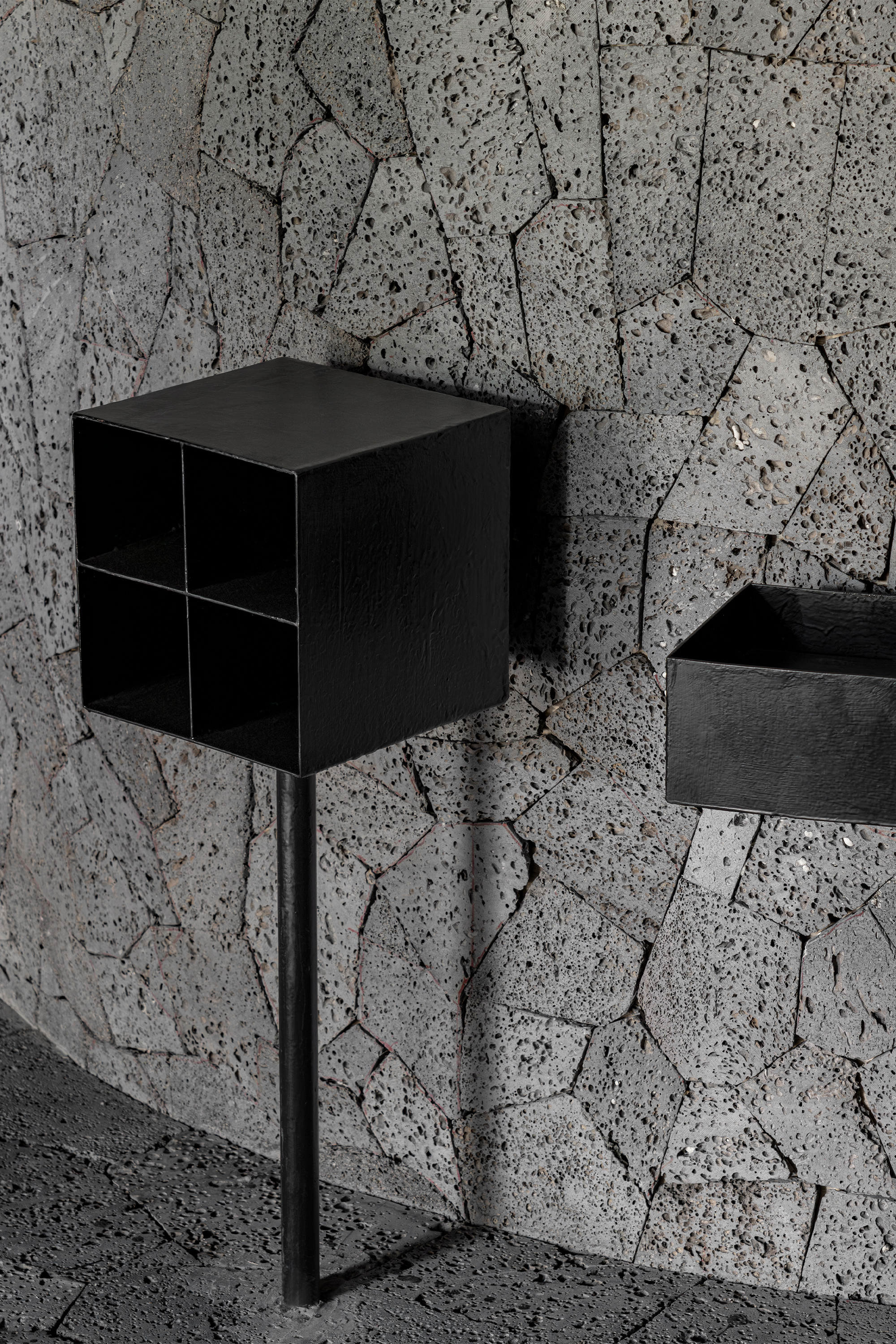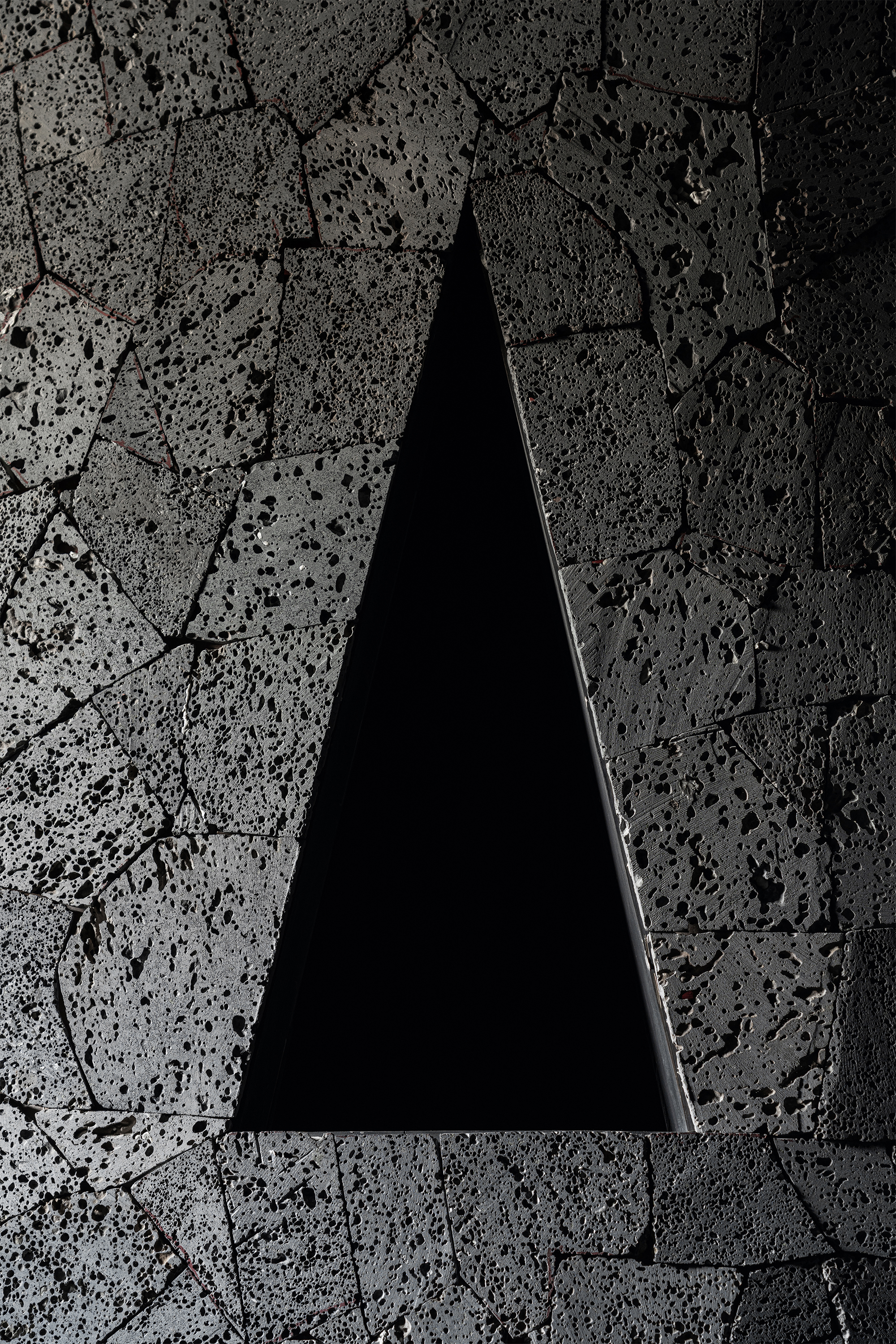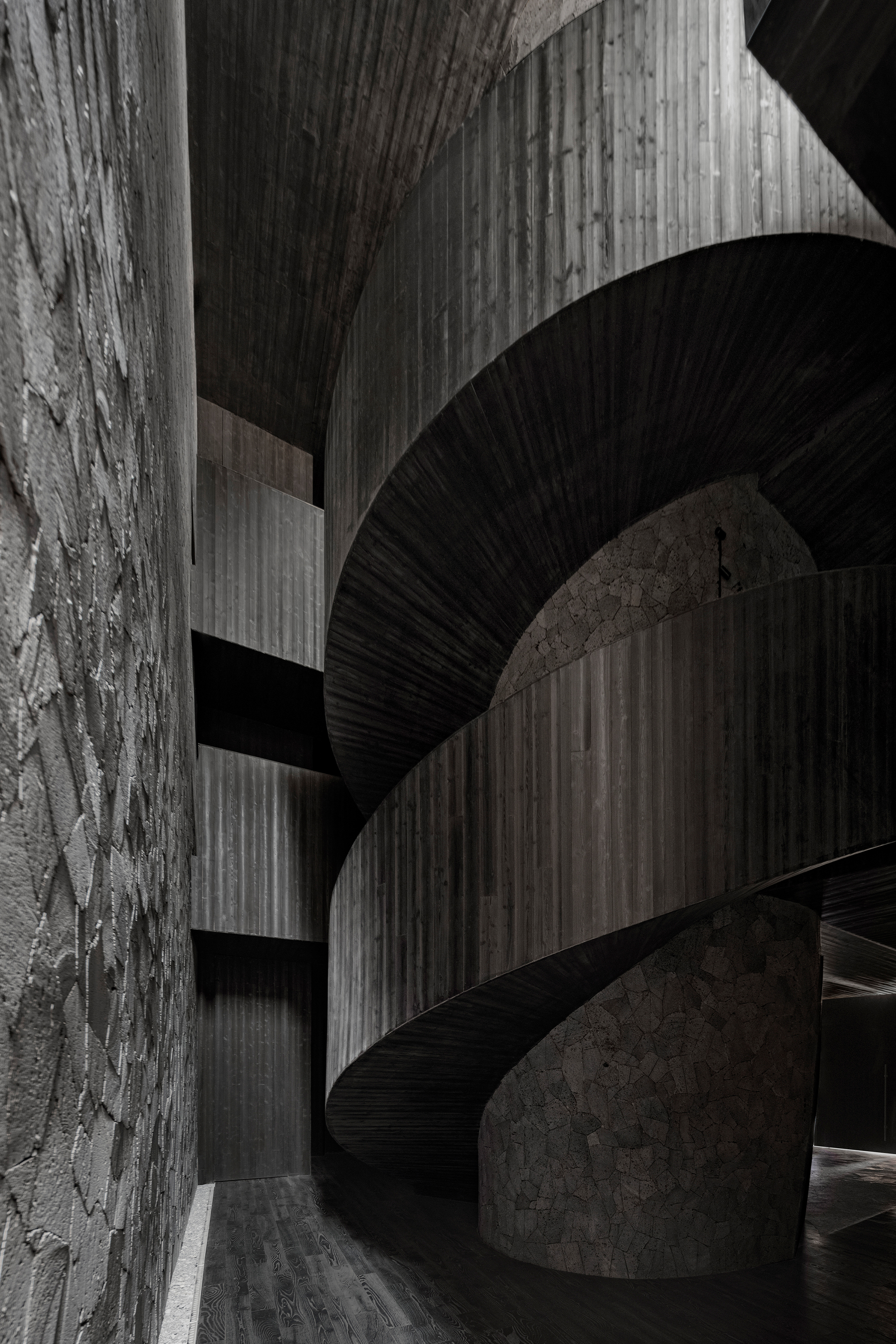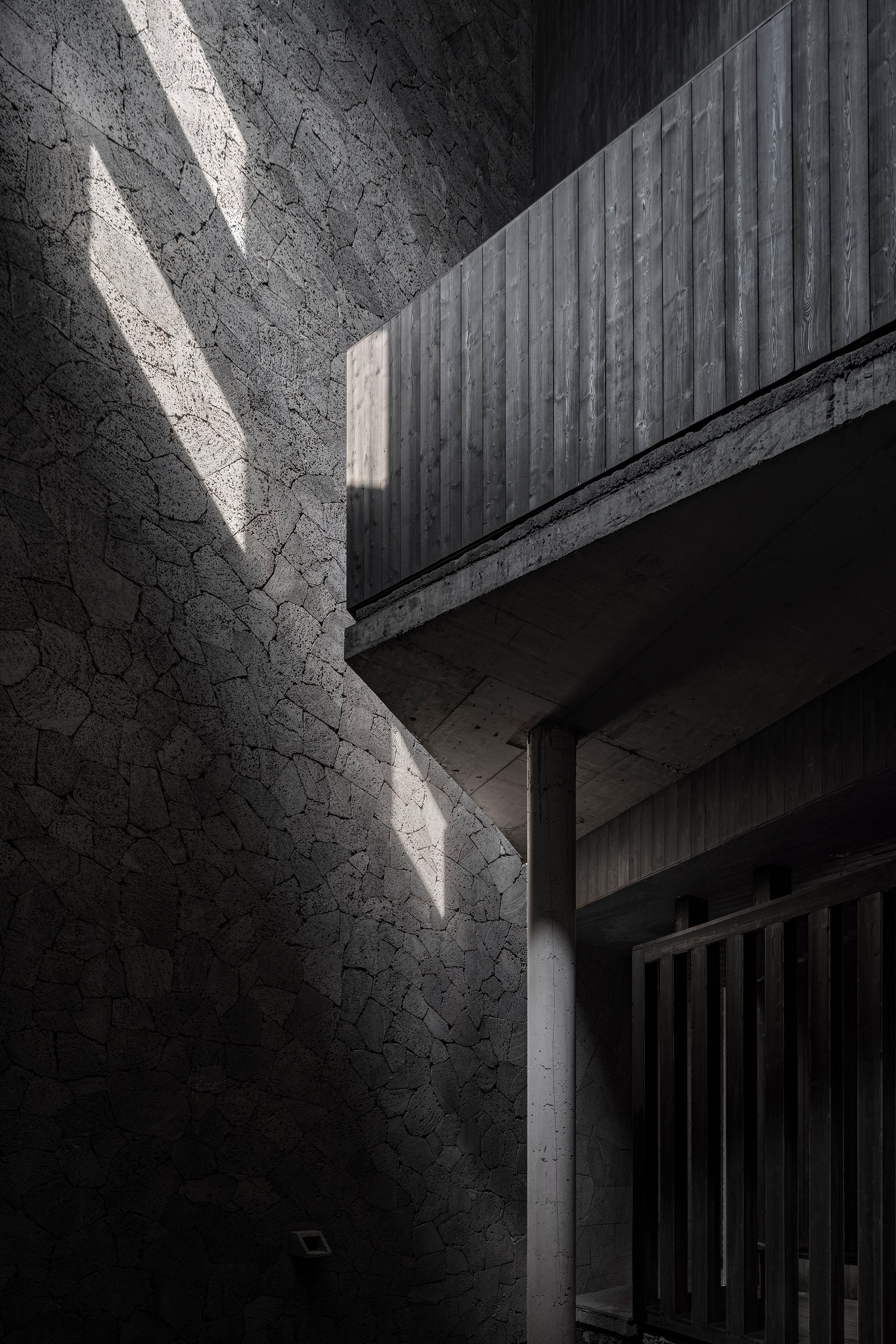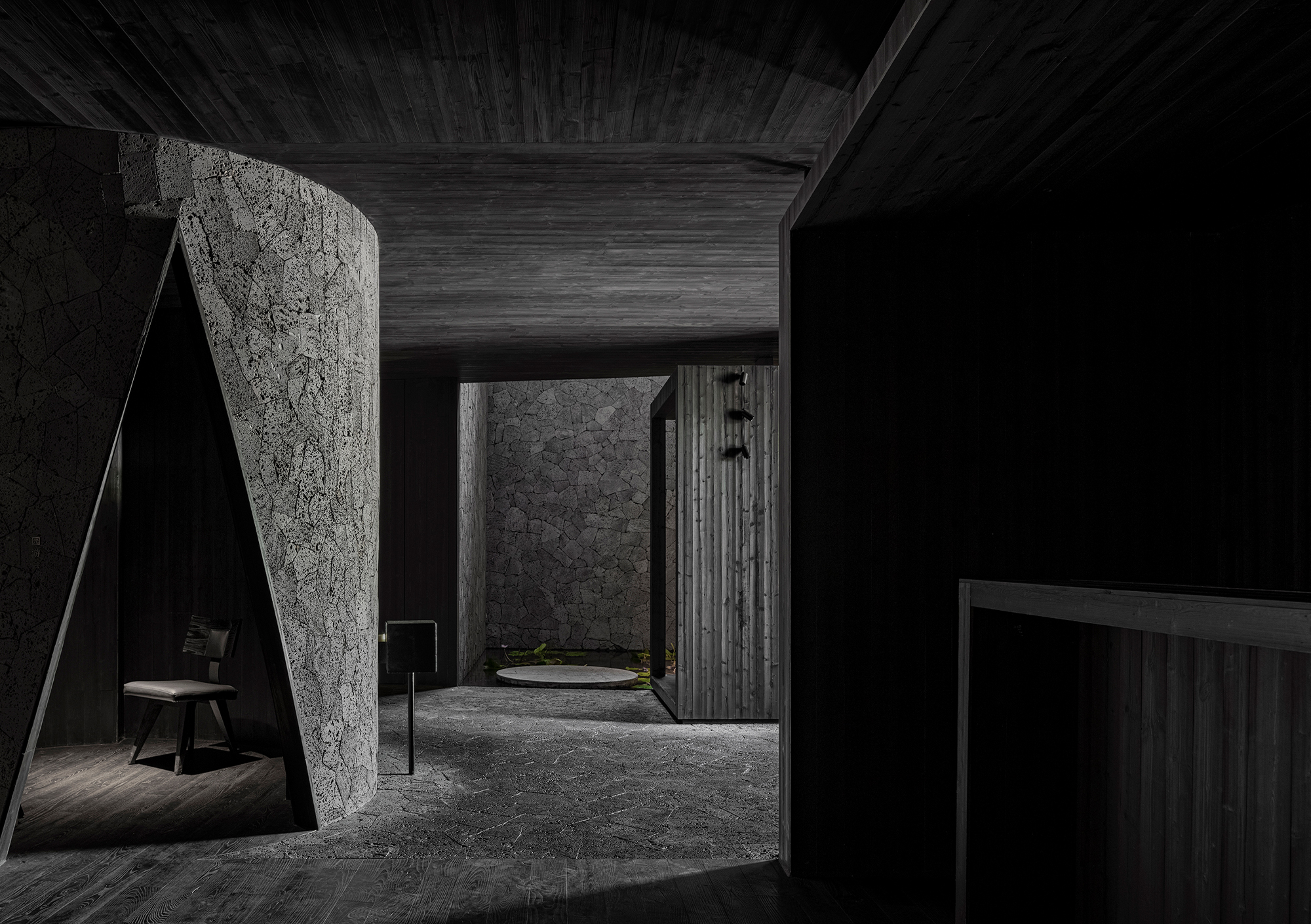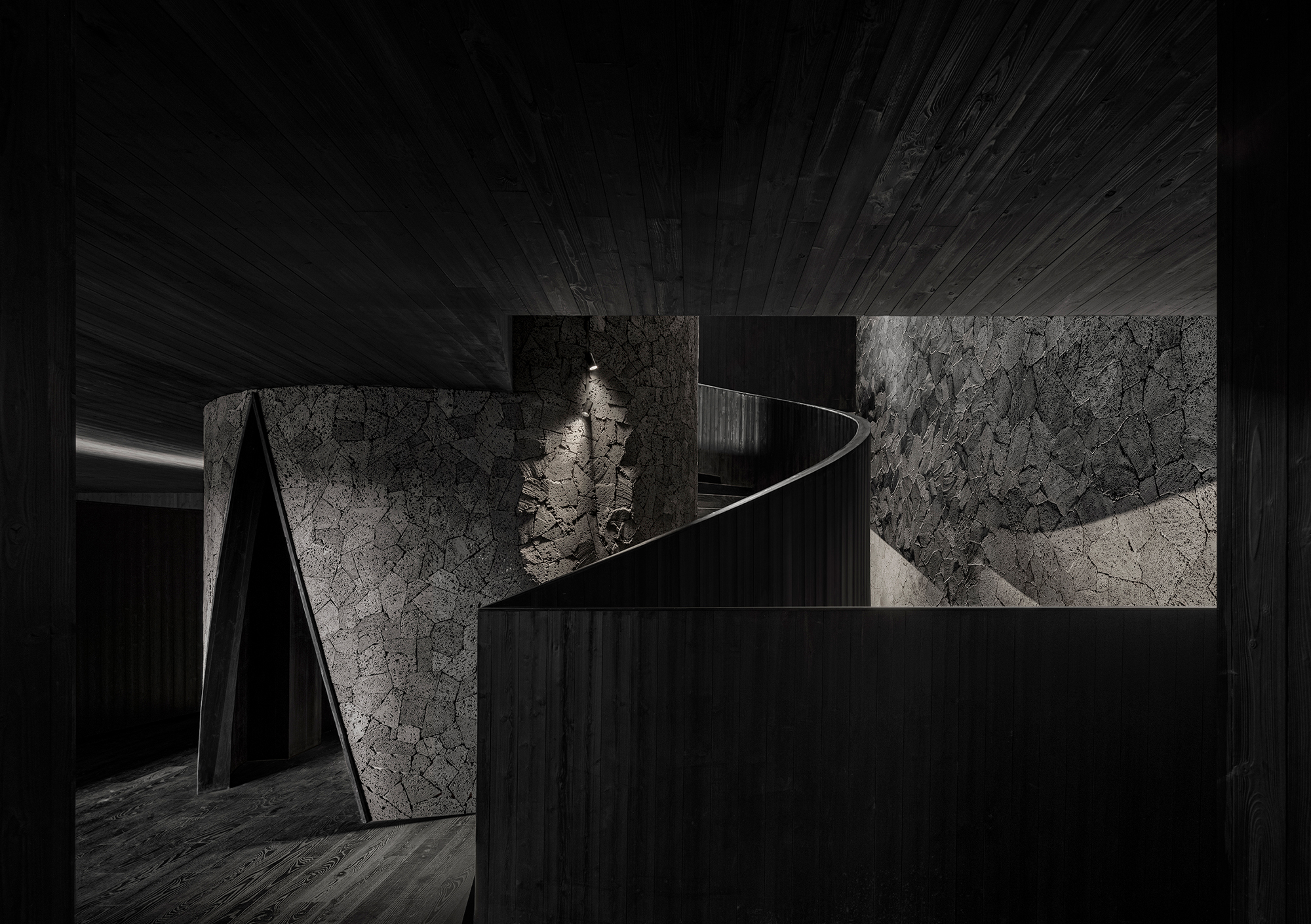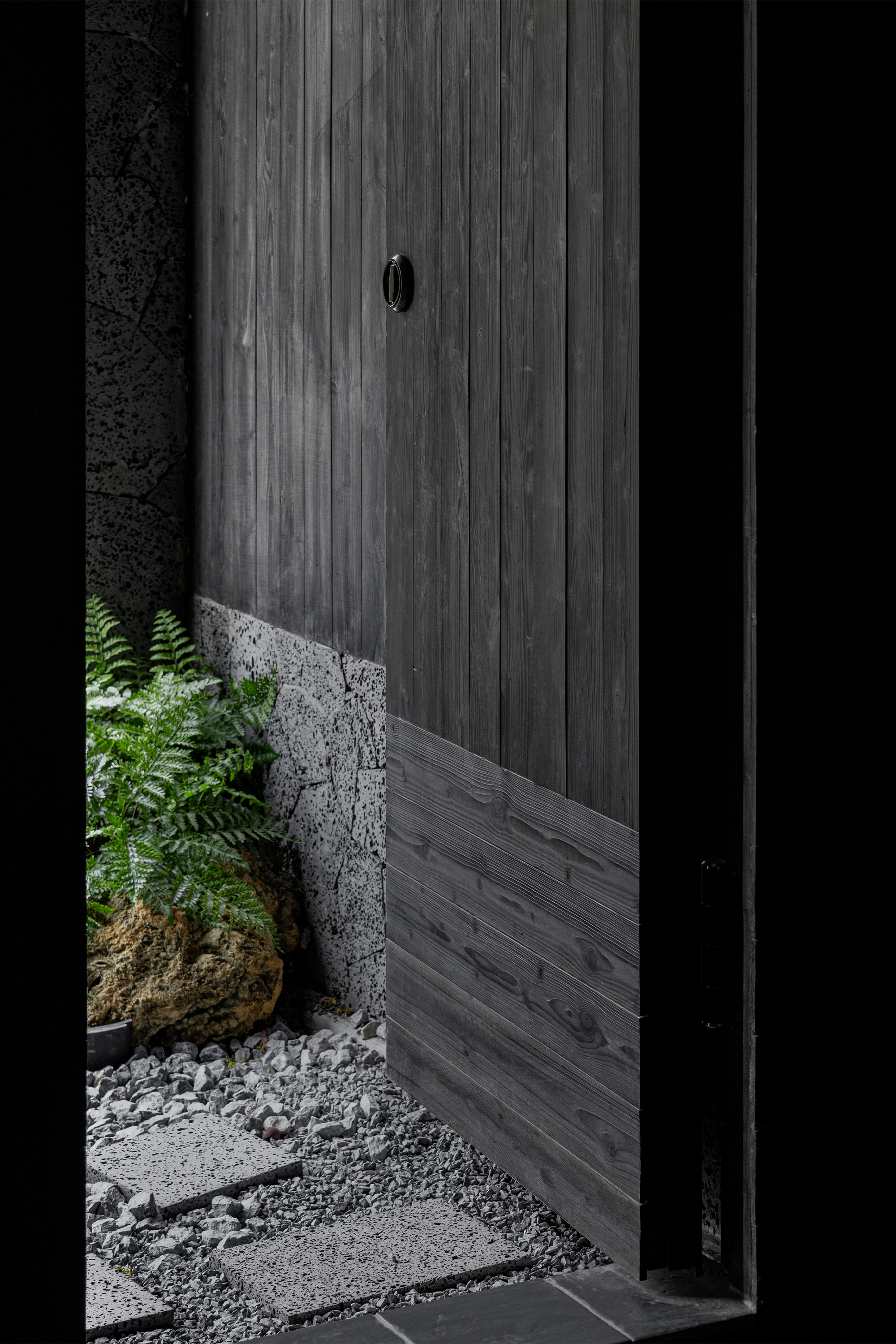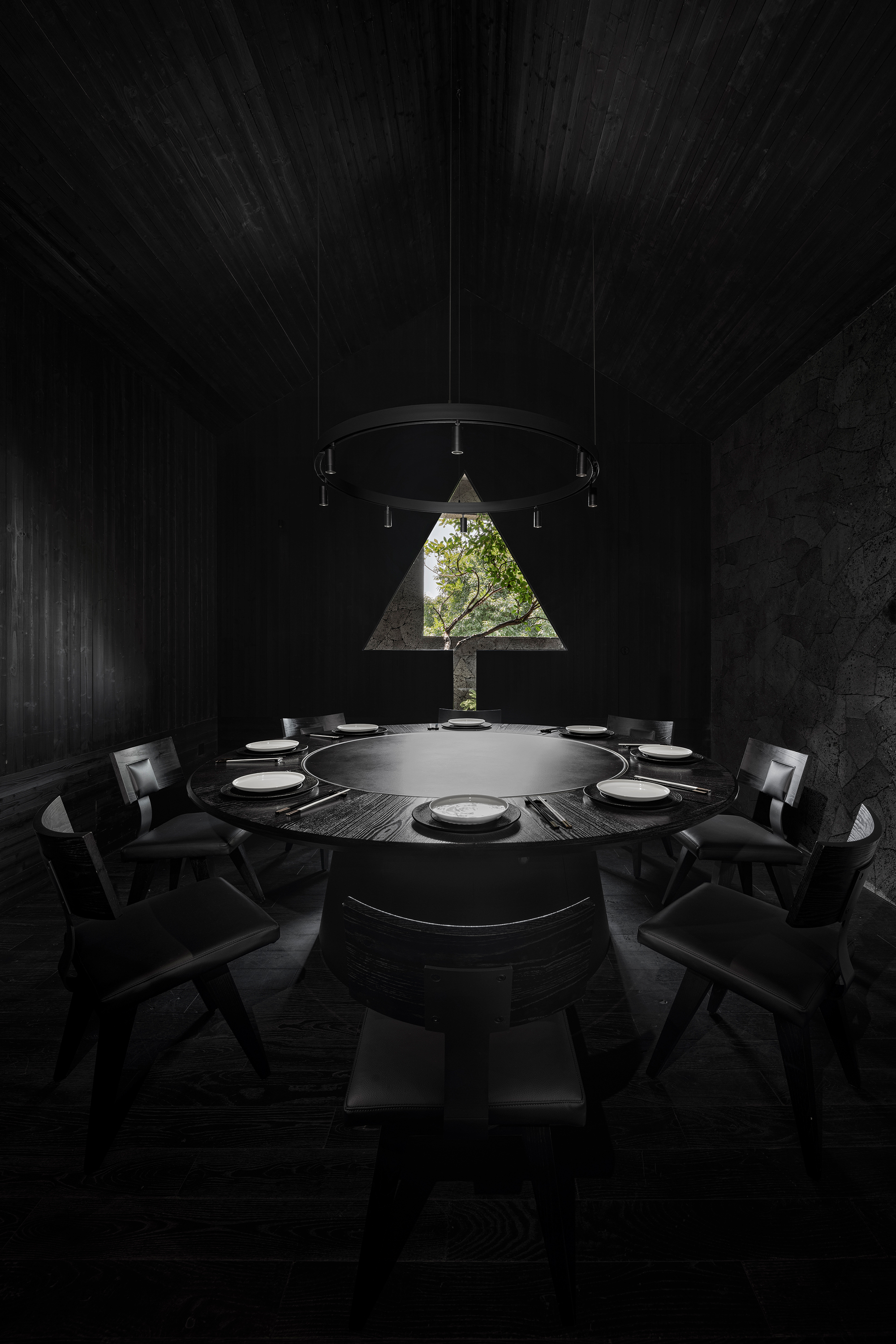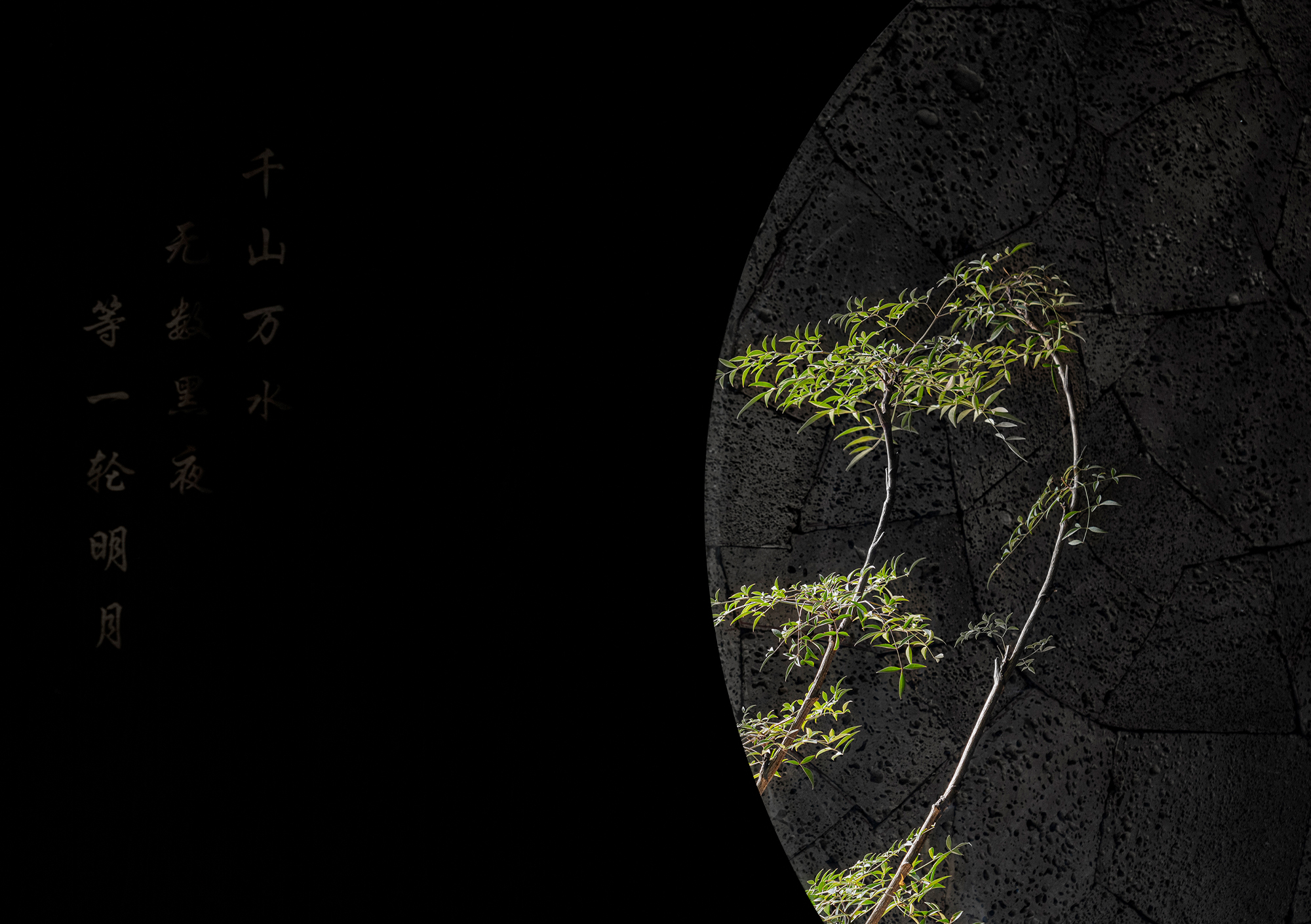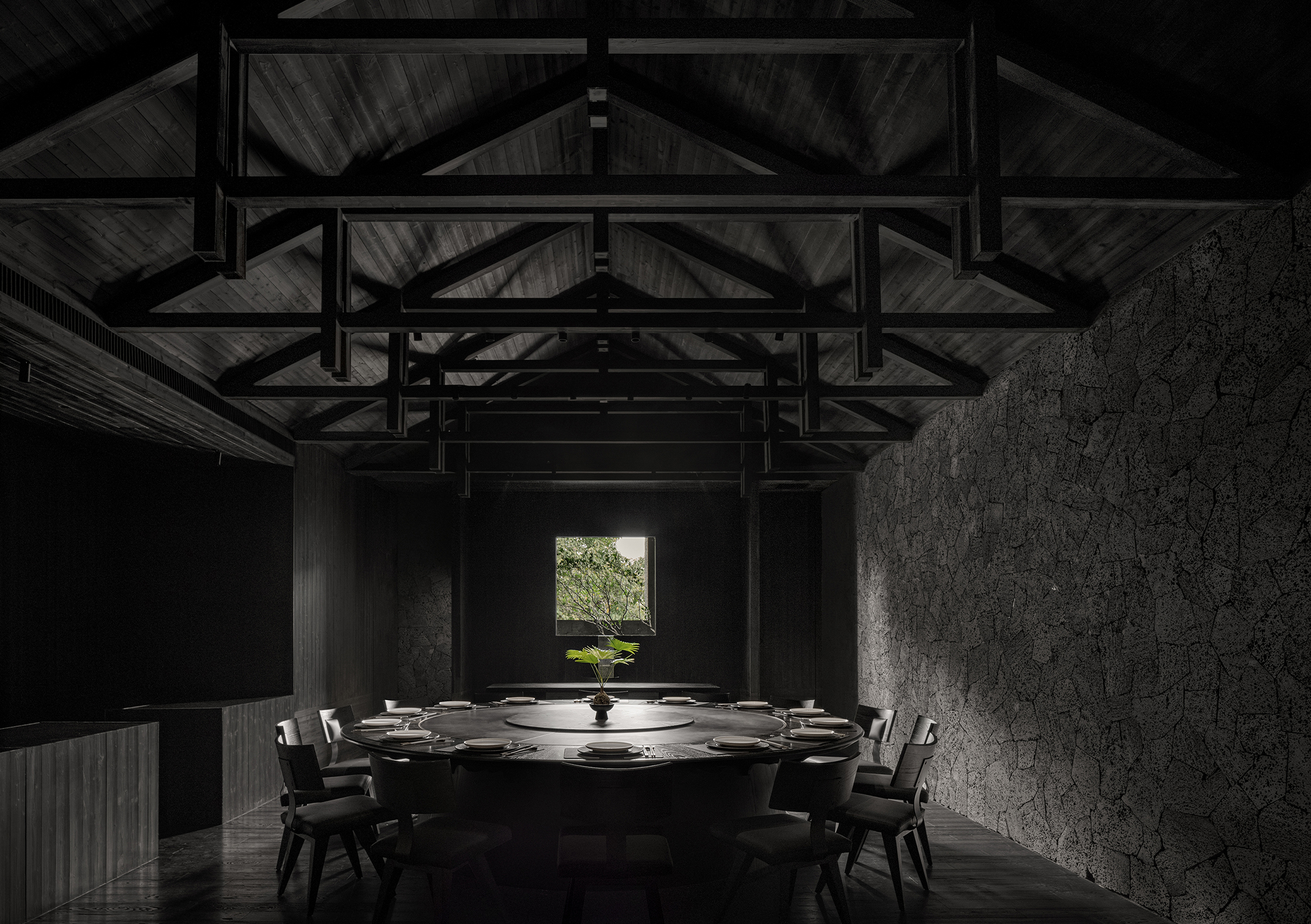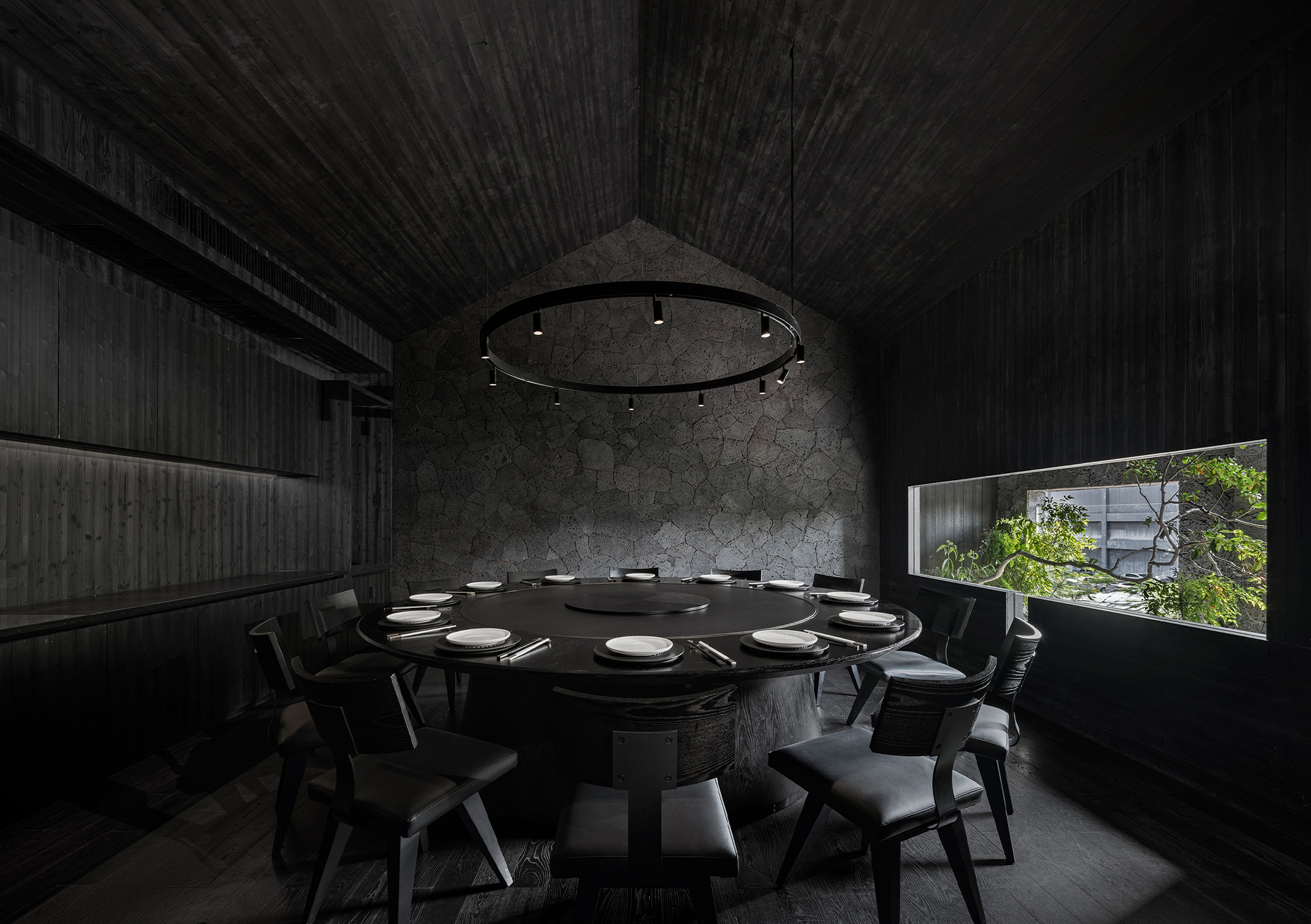“Tian jian” is a pitch-black restaurant conceived as an architectural meditation on darkness and light. Sitting on the edge of the city, it uses the most restrained material language—black volcanic stone and black oak—to build a space that feels both weighty and warm, austere yet profoundly pure.
Its façade stands like a silent monolith, revealing a primal heaviness beneath the daylight and shutting the city’s clamor firmly outside. Inside, however, the stage is set for a theater of light and shadow. Staggered square windows and a twelve-meter linear skylight draw natural light in like poetry, carving traces of time into the profound darkness. A black spiral staircase coils around a volcanic-stone column, rising with equal measures of strength and grace, linking the three floors into a unified spatial journey. Here, darkness gives the building its emotion, and light, its visibility.
The designer returns to the essence of architecture, using pure geometric masses as the language of space. Light enters through carefully placed openings, sketching shifting patterns on walls and floors. As day turns to night, the rhythm of the space subtly changes. Geometry becomes more than a container for function—it becomes the grammar of emotion, allowing architecture to transcend matter and enter the realm of spirit.
